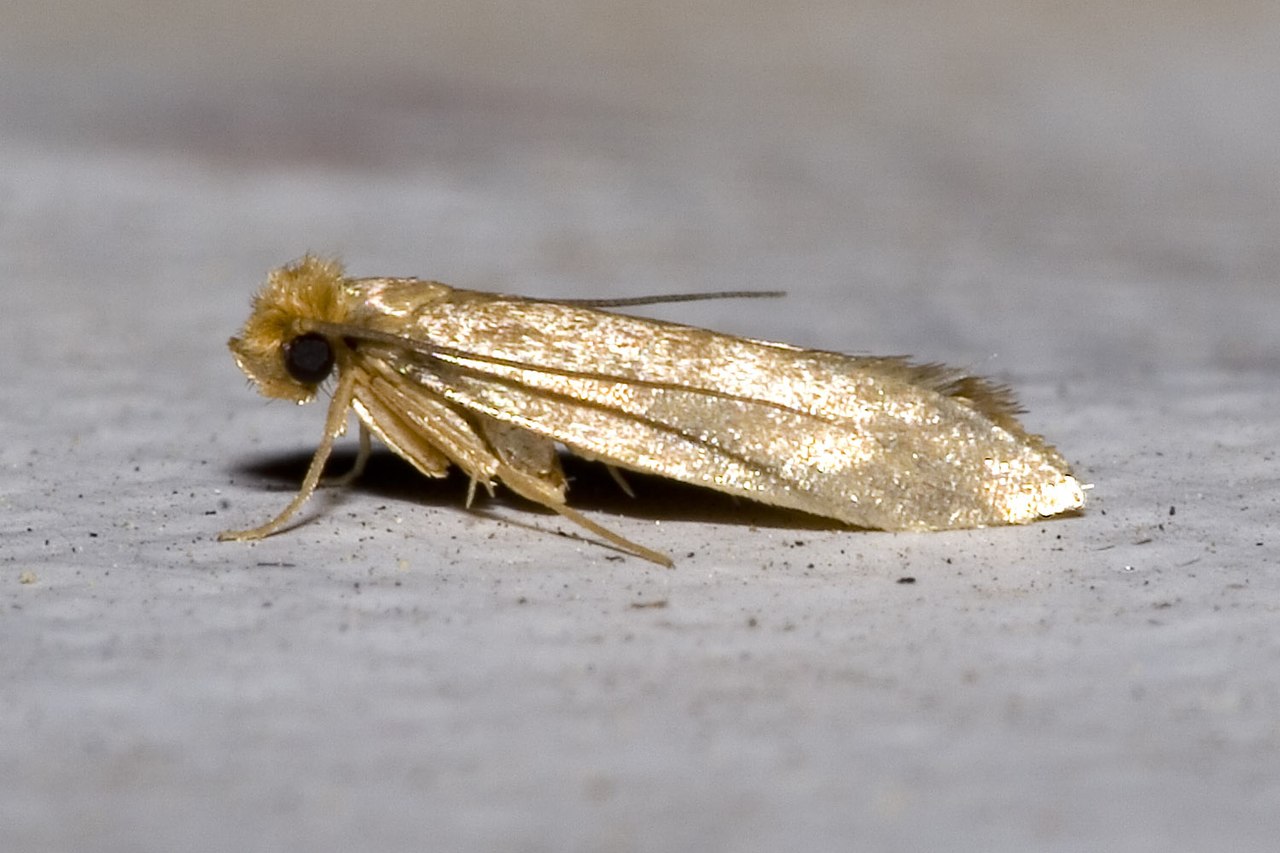Mothballs are a pesticide and can be harmful when misused
Controlling outdoor pests is a common summer activity for gardeners, but it’s also important to know how to safely and effectively protect against an insect that feeds indoors and can ruin clothing.
Mothballs, one of the most common methods to control clothes moths, are a pesticide that can be harmful to humans or animals when misused, according to Tim Stock, Extension integrated pest management education specialist and director of the OSU Extension School Integrated Pest Management Program.
“People often use mothballs in inappropriate sites and against incorrect pests,” said Stock, who co-authored “Mothballs: Proper Use and Alternative Controls for Clothes Moths.” “The only recommendation that counts is the product label, which is a legal document whose instructions must be followed – particularly on where mothballs may be used and which pests they will control.”
Mothballs should not be used inside attics, crawl spaces, gardens, trash cans or vehicles, Stock said.
“Unfortunately, mothballs are used in these locations to control pests other than clothes moths, including squirrels, skunks, deer, mice, rats, dogs, cats, raccoons, moles, snakes, pigeons and a variety of other animals,” Stock said. “Any such use is illegal and can be harmful to human health. A relatively common mistake is placing mothballs in an attic to repel squirrels. This will almost always result in a persistent and noxious odor throughout the home.”
Common moths in the Northwest
The larvae of two species of clothes moths in the Pacific Northwest are responsible for the damage to clothes and other fabric: the webbing clothes moth (Tineola bisselliella) and the casemaking clothing moth (Tinea pellionella). Clothes moth larvae are shiny, white and about a half-inch long.
“Clothes moth larvae do not eat synthetic fibers,” Stock said. “They feast only on fibers of animal origin such as wool, feathers or felt. They can, however, chew through synthetic fibers to reach dirt or stains of animal origin.”
They also can damage clothes that contain both synthetic fibers and wool, or other animal fibers but are active only on garments that are undisturbed for a long time.
Observing proper use
Mothballs, which come in cakes, crystals, tablets, bars and flakes, contain either naphthalene or paradichlorobenzene as active ingredients. Never mix these two types of mothballs, Stock said. Following the label instructions will limit exposure to these chemicals and control the moths most effectively.
“Both chemicals are fumigants, meaning that their volatile chemicals will vaporize at lower temperatures, such as room temperature,” Stock said. “Naphthalene has been associated with adverse health effects such as headache, nausea, dizziness and difficulty breathing. Paradichlorobenzene is also a potential hazard, although typically less than naphthalene.”
Mothballs must be used in an airtight space, such as an airtight garment bag or other containers labeled as airtight, and never in an open closet or plastic garbage bag. Once vapors enter the home, their odor can be detected at a few parts per billion in the air, Stock said. One part per billion is like a few drops of water in an Olympic-size swimming pool.
Alternative ways to control clothes moths are available for those who prefer not to use chemical treatments. The best way to protect at-risk (animal-fiber) clothing from clothes moths is by keeping clothes clean and storing them in airtight containers.
“For existing infestations of clothes moths, you must do more,” Stock said. “Vacuum drawers and closets using a HEPA vacuum cleaner. Also vacuum furniture and other places that provide food sources such as lint, pet hair and human hair. Lint and hair that have been undisturbed for a long time are prime breeding grounds for clothes moths.”
After vacuuming, promptly dispose of the vacuum bag. Boric acid dust can be used to treat cracks and crevices once the infested articles have been removed and cleaned. But Stock cautions people to always follow the label requirements when applying boric acid dusts.
“For stored clothing that is not kept in airtight containers, place the clothing in the dryer or in the sun once or twice a month to destroy larvae,” Stock said. “Shake the clothes or brush them before putting them back in the drawer or on the hanger. This will help dislodge remaining eggs and larvae.”
About OSU Extension: The Oregon State University Extension Service shares research-based knowledge with people and communities in Oregon’s 36 counties and the Confederated Tribes of Warm Springs. OSU Extension addresses issues that matter to urban and rural Oregonians. OSU Extension’s partnerships and programs contribute to a healthy, prosperous and sustainable future for Oregon.

